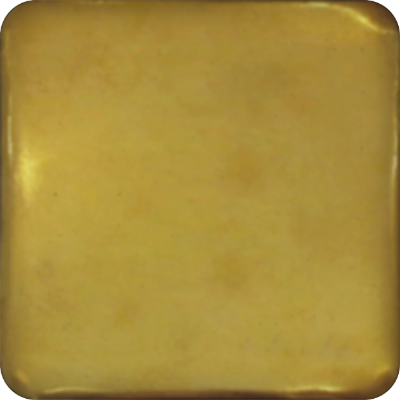Dr. Karl Maria Stepan

Personalia
Born:
Died:
Profession:
Persecution:
Imprisonment 12.03.1938 - 22.04.1939,
Dachau concentration camp 22.04.1939 - 27.09.1939,
Mauthausen concentration camp 27.09.1939 - 19.04.1940,
Gusen concentration camp 19.04.1940 - 02.10.1940,
Banned from working 1943,
Imprisonment 23.08.1944 - 26.09.1944,
Flossenbürg concentration camp 26.09.1944 - 04.11.1944,
Dachau concentration camp 04.11.1944 - 29.04.1945
KZ Number:
Memberships
Curriculum Vitae
Karl Maria Stepan attended grammar schools in Vienna-Meidling, Wiener Neustadt and Mödling, where he graduated. He then began studying law in Vienna and joined the student fraternity Norica in 1913.
At the beginning of the First World War, he volunteered for military service in August 1914. After completing his one-year volunteer service, he was sent to the Russian front as an ensign in the reserve. He was taken prisoner of war by the Russians near Dubno (Ukraine) in 1915 and spent almost five years in a camp in Sterjetensk (east of Lake Baikal) in Siberia. During the turmoil of the Russian Revolution, his first escape attempt was unsuccessful and he was interned in Moscow. The second escape attempt was successful and Karl Maria Stepan returned to Vienna via Leningrad at the end of July 1920.
A serious illness and the loss of his savings initially seemed to rule out the possibility of continuing his studies. P. Wilhelm Schmidt SVD († 1954) and o. Univ.-Prof. P. Dr. Nivard Schlögl OCist. († 1939) enabled him to continue his law studies. He moved to Graz in autumn 1921, where he joined the student association Carolina and was awarded his doctorate in law in 1924.
After practising in court, Karl Maria Stepan joined the law firm of Dr Rudolf Trummer. 1924-1928 he is General Secretary of the Christian Social Party in Styria. In 1928, he joined the "Anstalten des Katholischen Preßvereins in der Diözese Seckau" [later Druck- und Verlagshaus Styria or Styria Medien AG] as secretary to the management, becoming its director after a few months and general manager from 1929 to 1934.
In 1932, Karl Maria Stepan resigned from the CSP and informed Federal Chancellor Engelbert Dollfuß about the political activities of Governor Rintelen in May 1933. At the request of the Federal Chancellor, Karl Maria Stepan was Federal Leader of the VF from February to October 1934 and played a key role in its development and expansion. He then resigned due to personal tensions with Kurt von Schuschnigg and was appointed Governor of Styria on October 13, 1934; he took office on November 2, 1934. He takes rigorous action against the National Socialists.
After a visit to Graz by the Federal Minister for Internal Administration and Security, Dr. Arthur Seyß-Inquart († 1946), appointed in February 1938, Karl Maria Stepan is forced to resign as governor on 3 March 1938 and returns to the Catholic Press Association.
On 12 March 1938, he is arrested at 3 a.m. and sent to the police detention centre in Graz. His wife is forced to sell the house of the family of seven to the tax authorities. On May 25, 1938, he is transferred to pre-trial detention in the prison of the Regional Court for Criminal Matters in Graz. In order to criminalize him - like other political prisoners - a preliminary investigation was initiated on suspicion of theft and embezzlement. This also fails in the case of Karl Maria Stepan. On December 1, 1938, after his innocence was proven, the preliminary investigation was dropped and he was transferred back to the police prison.
He was taken into hospital care due to his poor state of health, but his release was not considered due to a protective custody order issued by Berlin on April 5, 1939. On April 22, 1939, he was then transferred to the Dachau concentration camp, where he spent 92 days in solitary confinement and partial darkness in the "Kommandanturarrest" ("bunker") shortly after his arrival. On September 27, 1939, he was transferred to Mauthausen concentration camp, where he first worked in the quarry, then as an iron bender in the construction detachment and finally, from December 1939 to April 1940, as an auxiliary paramedic in the epidemic ward, where he cared for Adolf Hörhager, Ferdinand Habel and his friend Hermann Lein, among others. In trials after 1945, he testified to "killings at almost any time and any place" in Mauthausen concentration camp.
After being denounced by fellow prisoners who feared being reported for their illegal trade in gold teeth, Karl Maria Stepan was sent to the Gusen I subcamp on 19 April 1940, where he carried out excavation work. At this time, Pastor Johann Gruber was a nurse in the prisoner infirmary from August 20, 1940. Karl Maria Stepan survived particular harassment here and was released from the concentration camp on October 2, 1940.
After an unsuccessful search for a job in the "Altreich", Karl Maria Stepan was banned from working and instructed not to leave Groß-Graz. From 1.12.1943, he worked as a warehouse worker and storekeeper in the Aryanized leather shop of an SS-Obersturmbannführer. After the failed assassination attempt of July 20, 1944, he was arrested again on August 23, 1944 - like many other well-known opponents of the regime - and sent to the Flossenbürg concentration camp ("a veritable hell") in September 1944 on the grounds of "recidivism". From there, he was transferred to Dachau concentration camp on November 4, 1944, where the US Army liberated him on April 29, 1945. However, he had to stay here until May 24. He then broke out of the camp quarantine and went to live with his children in Weißenbach an der Enns (Styria).
Places
Persecution:
Residence:
Citations
Krause, Peter/Reinelt, Herbert/Schmitt, Helmut (2020): Farbe tragen, Farbe bekennen. Katholische Korporierte in Widerstand und Verfolgung. Teil 2. Kuhl, Manfred (ÖVfStG, Wien) S. 344 - 346.
Photo: Biolex des ÖCV unter www.oecv.at/biolex; Stand: 15.10.2022.
